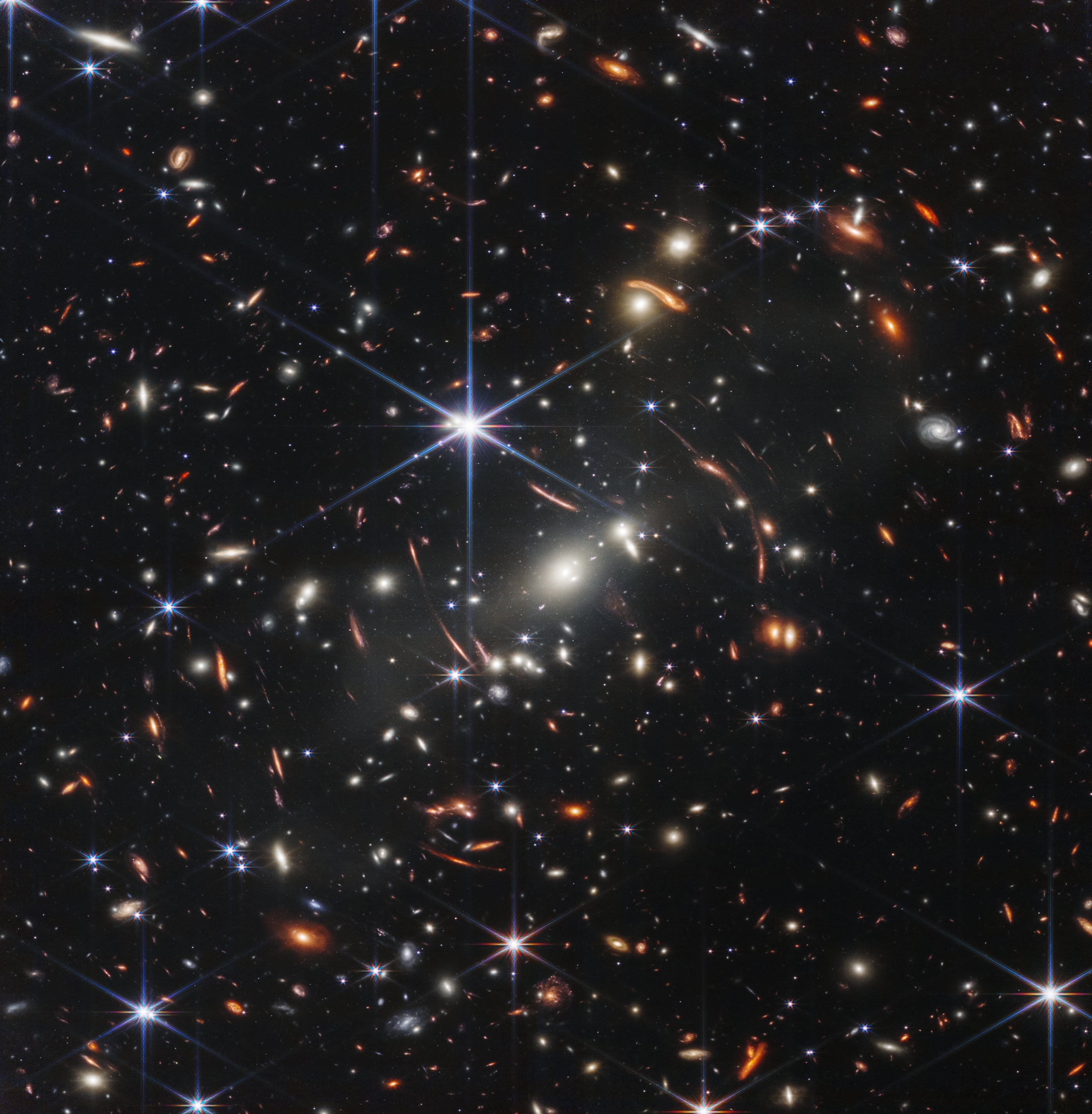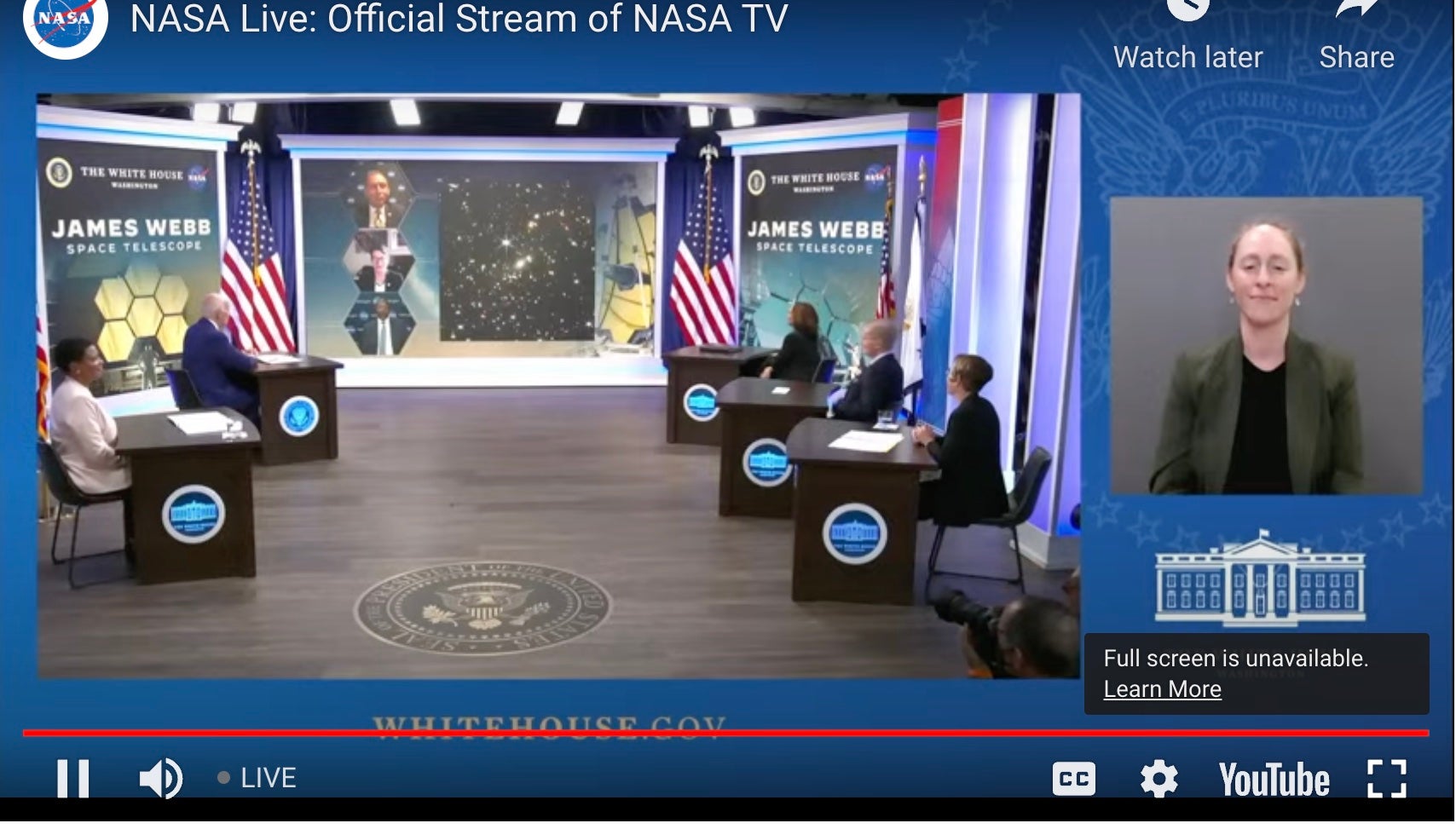Oldest, deepest recesses of the universe revealed in Nasa’s first James Webb image
Nasa reveals the first Webb image, the deepest image ever taken of the cosmos

Nasa and the James Webb Space Telescope just peered billions of years further into the past than ever before, and brought photos home for all to see.
Around 6.20pm EDT, US President Joe Biden revealed the very first public image taken by the Webb telescope, a sea of distant galaxies and brilliant spiky stars, the most distant view yet of the Cosmos. The image was presented on a screen at the White House along with comments by Nasa Administrator Bill Nelson.

“Mr President, if you held a grain of sand on the tip of your finger at arms length, that is the part of the universe you are seeing,” Mr Nelson said, a tiny portion of the sky magnified by Webb to reveal thousands of galaxies. “That light you are seeing on one of those little specks, has been traveling for over 13 billion years.”
Nasa’s Twitter account published a higher resolution version of the image than was projected at the White House.
Stars in the foreground appear as brilliant blue white spikes, while the most distant galaxies appear as orange-red smears, a distortion of their shapes caused by a technique known as gravitational lensing. To take the image, Webb targeted SMACS 0723, a galaxy cluster closer to Earth, using its gravity as a lens to magnify even more distant galaxies.
“Such systems are often called ‘nature's telescopes,’” University of Chicago cosmologist Michael Gladders said of gravitational lensing in an interview with The Independent, “as they can give us a sharper view of distant galaxies.”
The furthest galaxies in the first Webb image shared Monday are about 13 billion years old, and therefore 13 billion light years away, Mr Nelson noted in his comments, but Webb will look even further into the past as scientists taken up observations in earnest over the summer.
“They are going back about 13 and a half billion years,” he said, “and since we know the Universe is 13.8 billion-years-old, we are going back almost to the beginning.”
US Vice President Kamala Harris took up that note of scientific wonder in her comments about the Webb image and Nasa space science generally on Monday.
“Building on the legacy of Hubble, the James Webb Space Telescope allows us to see deeper into space than ever before, and in stunning clarity,” she said. “It will enhance what we know about the origins of our Universe, our Solar System and possibly, life itself.”
In his comments, President Biden turned his attention from the furthest reaches of space back to American policy and politics, seeing in the Webb image a sign of America’s capacity to achieve.
“These images are going to remind the world, that America can do big things,” he said.
Join our commenting forum
Join thought-provoking conversations, follow other Independent readers and see their replies
Comments
Bookmark popover
Removed from bookmarks